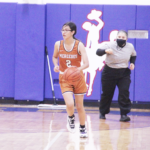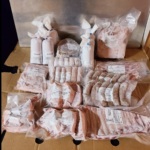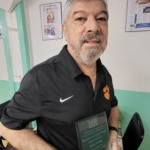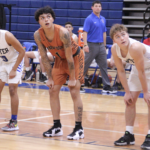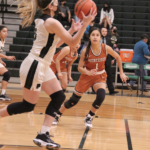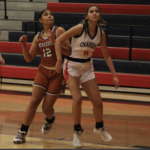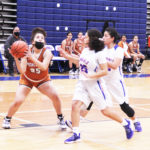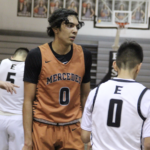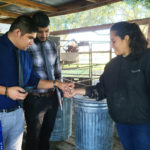Dia de Los Muertos. The Real McCoy
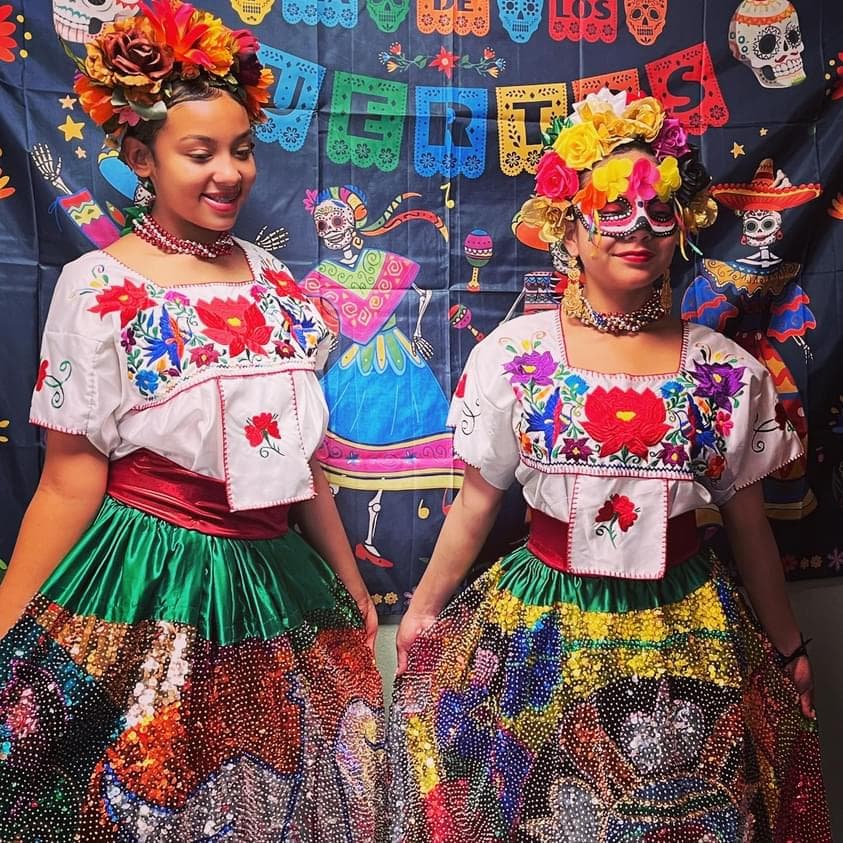
“There is a time for everything, and a season for every activity under the heavens;
A time to be born, and a time to die; a time to plant and a time to uproot,
A time to weep and a time to laugh, a time to mourn and a time to dance,
A time to scatter stones , and a time to gather them. “ Ecclesiastes 3: 1-5
I woke up this morning, my one brush with death on my mind, that is, not counting cancer and a triple-by-pass of the heart late in life. I must have been 5-6 years old when I got sick as a kid. I had a bad fever. Dad drove me to Reynosa, mom holding me all the way. I was very ill: sleepy, oblivious to the scenery. Normally, I loved the drive to Reynosa along military highway parallel to the river. There were doctors in Mercedes, Dr. Caldeira for one. He made home visits carrying a black bag. Trust, language, money? Why the long drive to Reynosa?
I do not remember the diagnosis or the cure. All I know is I saw a woman, La Muerte, standing at the door wearing a gauzy translucent gown beckoning me. La Muerte as depicted in the chalupa, “Buena y se la llevo “ (the equivalent of “Bingo”) I wasn’t scared. I was furious. My maternal uncle and padrino/godfather, Tio Lupe was home on leave. He was a medic in the army. He applied a cold pack on my forehead to stave off the fever. I flung it at La Muerte. She went away.
Tio died and is buried in Sanger, California with Tia Amparo and their son Danny.
I grew up listening to the old ones telling stories about death; attending funerals of friends, neighbors, family. It is interesting to study death in different cultures. We believe that how people live determines their afterlife. The Aztecs believed how they die determines it. They were known for the great number of sacrifices. Maybe they were helping others to their sense of glory. An old Irish proverb says “ It is in the shelter of each other that the people live.”
The Navajos believe in a bad spirit, the chindi, that remains after death. The Navajo will not speak of death or the dead. Tony Hillerman said the Navajo believed the chindi lingers in the world of the living “as a negative, haunting presence.” Because the Navajo saw death as a natural part of life, grief or mourning were like blasphemy to them. It suggested that the Creator had made a mistake deciding when people die. They avoid long funerals and wailing. That is what I remember most about our funerals: long and loud wailing. Oh, and we believe in signs. An owl hooting was a sign of death, la Leshusa.
“But what the Aztecs may be most notable for was their religion, and specifically the mass human sacrifice it called for. Human sacrifice carried out for religious purposes is not unique to ancient Aztec civilization, but the scale of human sacrifice the Aztecs performed is. Historians estimate that the Aztecs sacrificed thousands of people every year. People within the Aztec empire were used for human sacrifice, but the Aztecs also warred with outsiders for the express purpose of capturing more candidates for human sacrifice.
Why did the Aztecs commit human sacrifice, and in such great numbers? They believed that those who were sacrificed provided crucial nourishment to many of their deities who would in turn keep nature and the cosmos in balance. In the Aztec’s creation story, several gods had to sacrifice themselves in order to sustain the weak god who nobly sacrificed himself to create the sun. This initial mass sacrifice by the deities was not enough, however; they also called on the Aztecs to continually perform human sacrifices as a means to maintain the movement of the sun as well as to repay the deities for their sacrifices.”
Ancient Aztec Perspective on Death and Afterlife By Hilary Dockray The Christi Center
Grandma Panchita died at home in the ‘40s. It was the custom then. It saved the cost of funeral homes, the over $10,000 cost for a funeral today. Tio Pancho came home on leave. He was in the Army Air-Force. I was 4-5 years old, full of pride for my uncle. I still remember him walking from the the old depot in Mercedes in uniform. We lived across the tracks on First Street, en el barrio.
Grandma’s body was lying in-state, at home. Tio Pancho handled death his own way. I remember a gorgeous woman from Weslaco, Estela, his novia/sweetheart.
He took her to visit the graveside to pay his respects, drinking, of course. She was spooked. He wrapped dad’s guitar over her head. Brought it back for dad to fix. Estela stopped coming around. We lost a translator. She translate FDR’s “day of infamy speech,” Pearl Harbor to us. I remember it well. We listened to it over the radio. That was before tv.
Tio died in a freak accident in Ripley, Tennessee. His wife. Cleo and oldest daughter, Rita are also buried in Ripley. One of the girls married the owner ot the local newspaper like the Enterprise.
I also remember the long services, the Mass for the Dead, the men outside the funeral home drinking, passing the bottle. The actual funeral, the hole in the ground with the casket going down, received un puno de tierra (with a tilde over the “n,” pronounced “Poo-nyo”) a handful of dirt thrown or spread over the casket like queso blanco, farm fresh cheese over refried beans, our final respects; the cortege a measure of the deceased’s charity or lack thereof, during his/her life-time.
How I hate the custom of taking photographs of funerals, the open casket.
Death was impersonal, until my dad’s. I was in Washington D.C. when I got word of the approaching end. I flew straight to Mc Allen – well, with transfers in Houston or San Antonio. He was hospitalized in Weslaco. He had stopped speaking. I knew he knew I was there. A big tear rolled down his face when he heard my voice.
The doctor said there was nothing more he could do: making it official, the death sentence. Then dad was moved to the death-ward – we are not stupid. We know there is such a ward, a final storage room for the dying. Family was there. My sister Carmen and I remained to the end in the wee hours of the morning. His body jumped as to an invisible shock. This repeatedly. I prayed that it would stop. It was nerve-wrecking for the witnesses.
The doctor wanted to pull the plug. He wanted Carmen or I to decide. I said to him, “You made the decision to wire him. You make the decision to unplug him.” He did. Death came almost instantly. I would like to think it was the spirit leaving him. He folded like a dove, his head rolling softly to the right. He died peacefully.
I reminded Carmen that he always said he wanted mariachis at his funeral. She used to sing with a group. He was the first to have mariachis at his funeral, to the best of my knowledge. Since then I recounted this story to a friend near death in Rockford, Illinois. He ordered mariachis at his, an unlikely gesture at a funeral in North Central Illinois.
Death close-and-personal came back this last May. We lost our 39-year old son, Angel Xavier to thoracic thrombosis -a blood clot in the lungs. I wish I could have thrown something at Death and scare her away then. But, we did not learn of his death until 13 days after the fact. Four months later and Sheila is still closing accounts as the executor for his estate. Death, beside being full of sorrow, is messy. I found a Nahuatl poem, the language of the Aztecs that speaks to me about his loss.
Praying Our Goodbyes
by J. Rupp (1988) Ave Maria Press
Oh, only for so short a while you have loaned us to each other,
because we take form in your act of drawing us,
and we take life in your painting us, and we breathe in your singing us.
But only for so short a while have you loaned us to each other.
Because even a drawing cut in obsidian fades,
and the green feathers, the crown feathers, of the Quetzal bird lose their color,
and even the sounds of the waterfall die out in the dry season.
So, we too (die), because only for a short while have you loaned us to each other.
I am 85, the last lap, I am neither afraid nor longer defiant. It is a universal fact of life. We all die. We are born, we start counting the days until the end of time. The Navajo do not talk about death. They believe the bad spirit, the chindi will come back to haunt the living. We have some of those too, people who do not talk about politics or religion. No, no chindis are involved. They just refuse to talk politics, period. I say to them, “Fine. Do not complain. You are leaving the field wide open to the corrupt, the greedy, the non-statesman-like. The very same ones you complain about. Blame yourself for the state of affairs.”
I do not understand the latter: the ones for whom religion is taboo. To whom does the atheist or agnostic turn to in the end? The void? The fog surrounding death? I have never met an atheist or agnostic . If I have, I do not pal around with them. It’s against my religion.
The closer I get to the end, the more I rely on spiritual readings to “Make my day,” as Clint Eastwood would say. Dad did it before me. He had an old Bible written in Spanish. He would sit in the porch reading. I never knew him to be religious. He wasn’t against religion. He was always too busy. He was a professional musician. He played on Saturday nights and slept-in at church time. He squared with the church before he died. After mom’s first husband died, mom and dad were married by a priest. His body received the holy blessing before death and had a funeral Mass for the Dead, before over 200 dolientes, mourners friends and family.
Dia de los Muertos is celebrated with much fanfare today. The picaros make fun of death, that is, until death makes fun of them. She has the last laugh.
I love the art. We drive 50+ miles to Iowa to an art museum. They always have outstanding artwork in various mediums to celebrate this day, Dia de Los Muertos. The exhibits are on display weeks at a time. Sheila and I respect death. We know it is the door to everlasting life and a return to our Creator.

